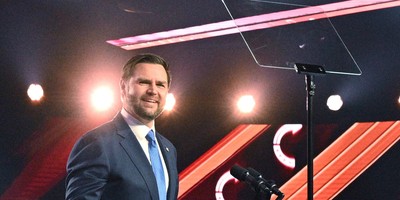Kezar was at the southeast corner of Golden Gate Park, adjacent to the Haight-Ashbury District. In 1967, there was probably no greater side-by-side contrast of the diverging trends in American culture than between the people inside that stadium, watching a game played on grass, and the people outside the stadium, smoking grass.
At the age of 9, I followed pro football -- that is, the fate of the 49ers -- with passionate intensity. I did not care about the extraordinarily odd and presumably transient people on the other side of the stadium wall. I assumed the only way they could have a long-term impact on my world was if, say, one of them, driving stoned, ran me over in his Volkswagen bus.
My father and I in those days followed a rigorous yet gleeful schedule on fall Sundays. We woke early, attended 6:30 a.m. Mass, and got home in time to watch Lindsey Nelson's taped highlights of that week's Notre Dame game. Later, we all climbed into two cars -- my father's T-Bird and my mother's station wagon -- and caravanned to St. Mary's Hospital, where my father was the chief pathologist, and where we could park on game days.
Kezar was only five blocks from St. Mary's. But, in 1967, those were among the most bizarre blocks in America. This was where Haight Street terminated at the eastern edge of the park.
Recommended
As we walked those blocks, carrying our picnic lunch to the stadium, we caught occasional and unfortunate views into nearby meadows, where the then-current denizens of the Haight, fully outfitted or less-than-fully-outfitted in their most colorful attire, took their daytime recreation.
My mother would avert and roll her eyes, hoping her children did the same. My father would puff on his Dunhill Maduro, breath out tobacco smoke, and occasionally emit sardonic observations about the more exotic aromas and human beings drifting out of the parklands.
But when we got to Kezar on those Sundays in 1967, the people gathering there were no different than they had been in 1963, or '64, or '65, or '66. They were football fans -- Americans who had worked hard all week, paid their own money for tickets, gone to church that morning and were ready to see the 49ers beat somebody.
In those days, that was an iffy proposition.
The Niners went 7-7 in 1967. One of their last home games that season was against the Chicago Bears, who beat them 28-14. The record books show that Gale Sayers scored three touchdowns that day, including one on a 97-yard kickoff return and another on a 58-yard punt return.
Afterward, my father tried to console me by telling me I had seen one of the game's greatest players play one of his greatest games -- that what I had won that day was a lifelong memory of having witnessed firsthand an indisputable display of excellence.
Back then, that argument made no sense to me. I just thought I had seen my team beaten by the enemy.
The last time the 49ers played in Kezar (before they moved to Candlestick) was on Jan. 3, 1971, when they faced the Dallas Cowboys in the NFC championship game. By that time, the hippies had long since departed the Haight, and except on game days, the neighborhood had reverted to a relatively quiet place featuring beautiful, old, somewhat run-down Victorian houses.
About that time or not long afterward, McDonald's opened a restaurant at the corner where Haight hit the park. After that, the strongest aroma drifting in the air near Kezar was the smell that rises when frozen burgers are strewn across a griddle.
The 49ers lost that 1971 championship game, and I lost the last chance I had during childhood for my hometown team to win it all.
In the intervening decades, American football fans, the people who populated Kezar in 1967, sometimes seemed to be winning their cultural scrimmage with those who cavorted in the Haight.
That never seemed more the case than in the early 1980s, when Ronald Reagan took the White House, and the 49ers took their ultimate revenge on the Dallas Cowboys.
Those who pilgrimaged to the Haight in 1967 had turned away from hard work, individual responsibility, the traditional family and the religious heritage of the West. They had dropped out of the value system that kept America free. Many no doubt eventually turned back to those values, driven by hard experience. Yet some did not -- and many of those became leaders in our public schools and colleges, our entertainment and media elites, and our political class.
In 1989, the old Kezar was dismantled and replaced with a smaller stadium. In 2014, the 49ers will move out of San Francisco completely and resettle in Silicon Valley. Meanwhile, an ideological heir to the Haight-Ashbury sits in the White House. But like the Niner fans of the 1960s, I will always believe that no matter how bad things get, so long as we keep the faith, the trophy will someday be ours.

























Join the conversation as a VIP Member